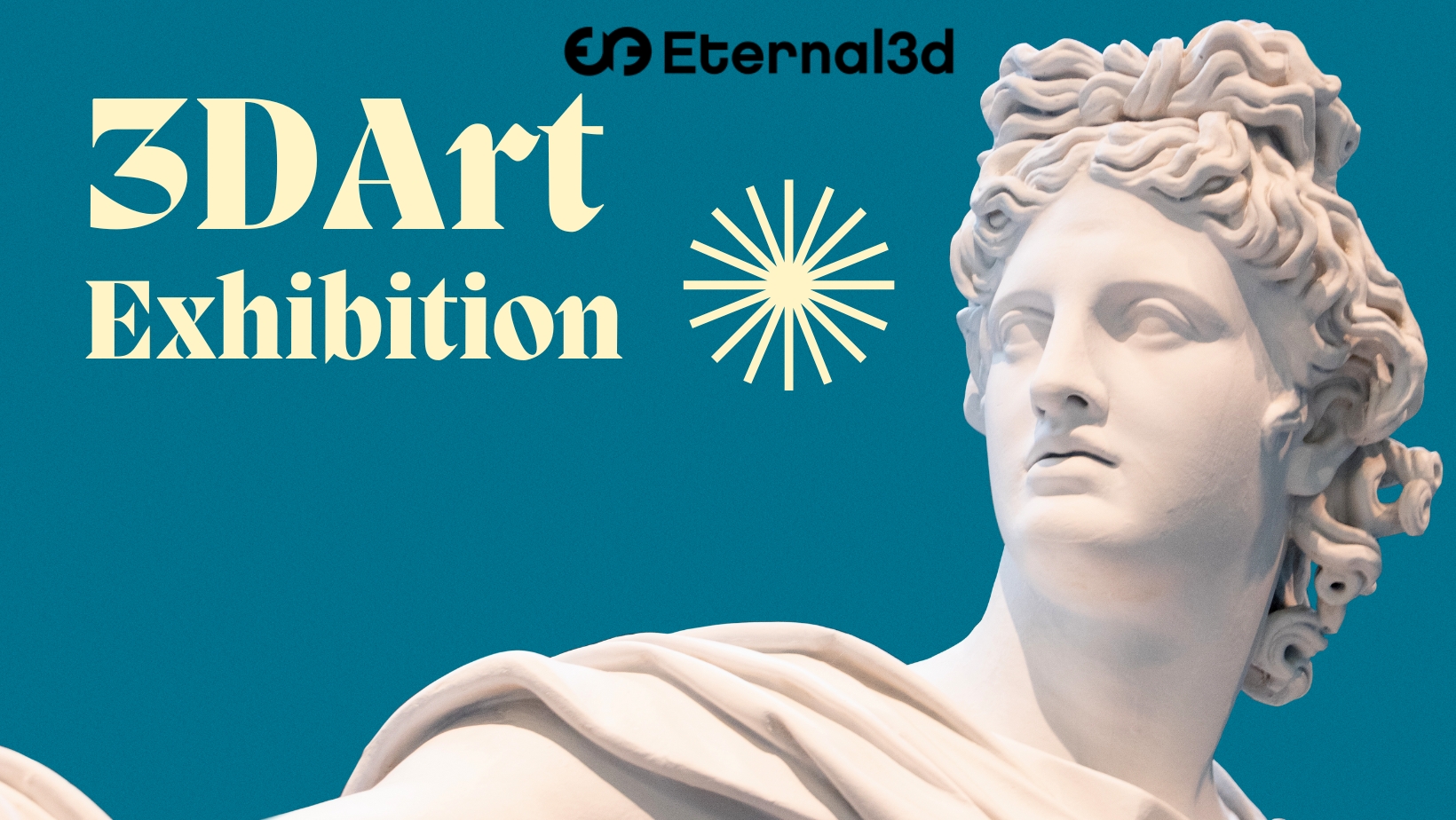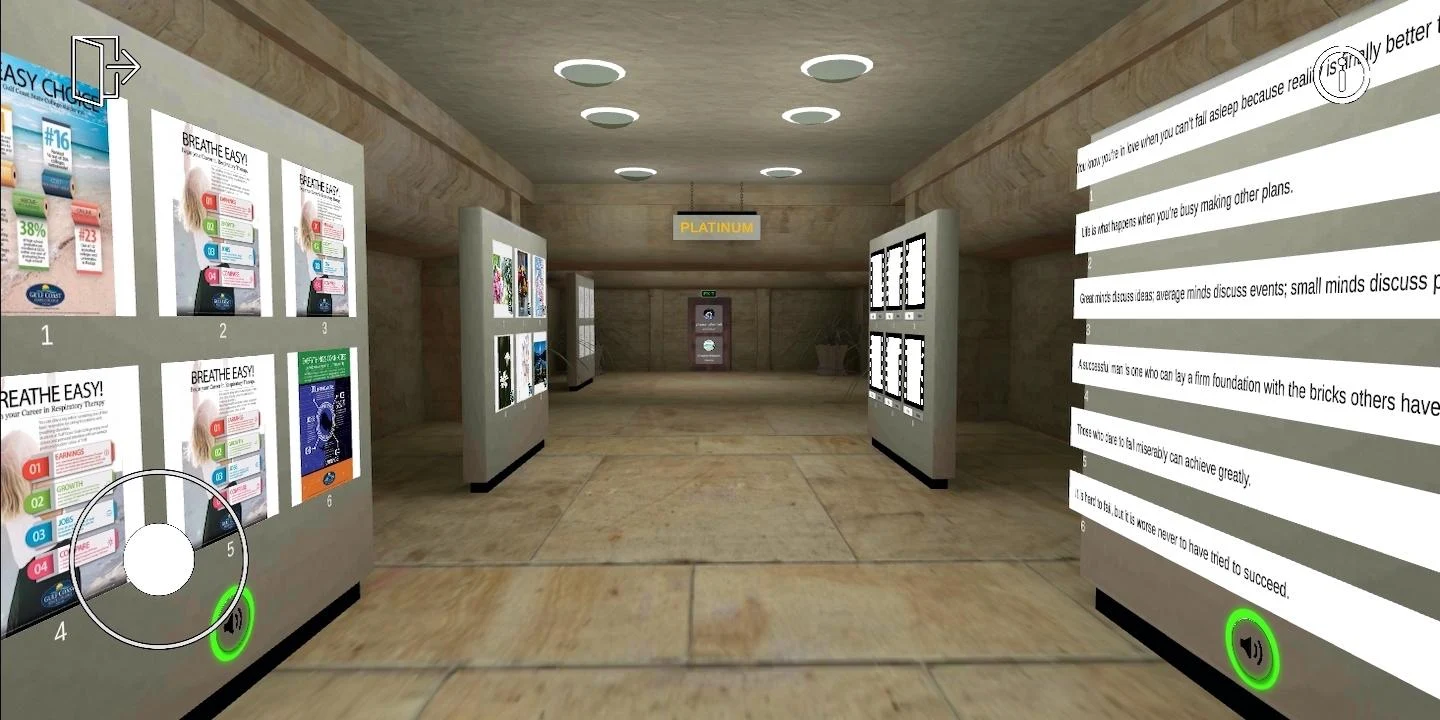Organizing a 3D art exhibition can be a thrilling experience, offering a unique way to engage audiences and showcase creativity. To make your event truly memorable, consider these creative ideas:
- Interactive Installations:
Engage your audience with interactive installations that blur the lines between art and experience. Incorporate touch-sensitive displays, motion-activated elements, or immersive audiovisual effects to captivate visitors. These installations invite participation, allowing viewers to become part of the artwork. Consider creating interactive sculptures, digital art pieces that respond to movement, or installations that change based on viewer input. By incorporating interactive elements, you can create a dynamic and memorable experience that will leave a lasting impression on your audience. - Augmented Reality (AR) Experiences:
Elevate your exhibition with AR technology, offering visitors a new way to experience art. Use AR apps or devices to overlay digital content onto the physical world, bringing artworks to life with animations, audio guides, and additional information. Create AR scavenger hunts or interactive storytelling experiences that guide visitors through the exhibition in a unique and immersive way. By integrating AR into your exhibition, you can create a captivating and interactive environment that engages viewers and enhances their understanding and appreciation of the art. - Virtual Reality (VR) Tours:
Transport your audience into a virtual world with VR tours of your 3D art exhibition. Through VR headsets, visitors can explore the exhibition from anywhere, experiencing artworks in 360 degrees. Create guided tours with narration or allow visitors to navigate freely, providing a personalized and immersive experience. VR tours offer a unique opportunity for those unable to attend in person to experience the exhibition remotely. By offering VR tours, you can expand your audience reach and provide an engaging and memorable way for people to connect with your art. - Live Art Demonstrations:
Bring the creative process to life by hosting live art demonstrations at your 3D art exhibition. Invite talented artists to showcase their skills and create artwork in real time, allowing visitors to witness the artistic process firsthand. These demonstrations entertain and engage your audience and provide valuable insights into the techniques and inspirations behind the art. Consider organizing interactive sessions where visitors can interact with the artists, ask questions, and even participate in creating art themselves. Live art demonstrations add a dynamic and interactive element to your exhibition, enhancing the overall experience for visitors. - Themed Sections:
Organize your 3D art exhibition into themed sections to create a cohesive and engaging visitor experience. Each section can explore a different theme, style, or concept, immersing viewers in various artistic narratives. For example, you could have a section dedicated to nature-inspired art, another showcasing abstract works, and another focusing on futuristic themes. Themed sections help guide visitors through the exhibition, providing context and enhancing their understanding and appreciation of the artworks. Consider using signage, lighting, and decor to differentiate each section and create a visually stimulating environment. - Collaborative Art Projects:
Incorporate collaborative art projects into your 3D art exhibition to foster a sense of community and participation. Provide a space where visitors can contribute to a collective artwork, such as a mural, sculpture, or digital installation. This interactive element engages visitors and allows them to become part of the creative process. Consider themes that resonate with your audience and provide materials and guidance to encourage participation. Collaborative art projects promote inclusivity and creativity, creating a memorable and meaningful experience for visitors of all ages and backgrounds. - Artwork in Unusual Spaces:
Create a sense of wonder and discovery by showcasing 3D art in unconventional locations within your exhibition venue. Think beyond traditional gallery spaces and consider using outdoor areas, corridors, or non-traditional venues like abandoned buildings or industrial spaces. Placing artwork in unexpected spaces adds an element of surprise for visitors and challenges how they perceive art and its relationship to its environment. Consider how the space can complement or contrast with the artwork to create a unique and immersive experience that engages and intrigues your audience. - Projection Mapping:
Transform your 3D art exhibition with projection mapping, a technique that uses projectors to create dynamic visual displays on irregularly shaped surfaces. By projecting images, videos, and animations onto sculptures, buildings, or other structures, you can create immersive and interactive experiences that captivate your audience. Projection mapping allows you to manipulate the perception of depth, scale, and motion, turning static artworks into dynamic, ever-changing displays. Consider using projection mapping to tell stories, evoke emotions, or enhance the overall atmosphere of your exhibition, creating a truly unforgettable experience for your visitors. - Artwork Incorporating Technology:
Merge art with innovation by showcasing 3D artwork incorporating technology in your exhibition. Choose artworks that utilize digital elements, such as interactive screens, projections, or augmented reality, to enhance the viewer’s experience. These artworks can blur the lines between the physical and digital worlds, creating immersive and dynamic installations. Consider artworks that use technology to explore themes of connectivity, identity, or the impact of technology on society. You can create a futuristic and cutting-edge exhibition that engages and inspires your audience by showcasing artwork that incorporates technology. - Artist Talks and Workshops:
Enrich your 3D art exhibition with artist talks and workshops that offer insights into the creative process and techniques behind the artworks. Invite artists to discuss their inspirations, challenges, and visions, providing audiences with a deeper understanding and appreciation of the art. Workshops can offer hands-on experiences, allowing visitors to try out techniques or create their artwork under the guidance of skilled artists. These sessions educate, inspire, and create meaningful interactions between artists and art enthusiasts, fostering a sense of community and connection within your exhibition. - Art Competitions:
Add an exciting element to your 3D art exhibition by hosting an art competition. Invite artists to submit their work to be featured in the exhibition, showcasing diverse talent and creativity. Consider having categories based on themes, styles, or mediums to encourage participation from artists with different backgrounds and styles. Hosting an art competition not only adds a competitive edge to your exhibition but also provides a platform for emerging artists to gain recognition and exposure. It can also attract a wider audience interested in discovering new and innovative artworks. - Art Installations in Nature:
Create a unique and immersive experience by showcasing 3D art installations in natural settings. Use the beauty of nature as a backdrop to enhance the impact of the artworks, creating a harmonious blend of art and environment. Consider using materials that complement the natural surroundings and themes that resonate with the local landscape and culture. Art installations in nature offer a refreshing alternative to traditional gallery spaces, inviting visitors to explore and interact with art in a natural setting. They also provide opportunities for artists to create site-specific works that respond to the environment, adding an element of discovery and surprise for visitors. - Artwork with a Social Message:
Use your 3D art exhibition as a platform to showcase artworks that address critical social issues. Choose relevant and impactful themes, such as environmental conservation, human rights, or cultural diversity. These artworks can provoke thought, inspire change, and spark meaningful conversations among your audience. Consider collaborating with artists passionate about social causes and providing information or resources to educate visitors about the issues being addressed. By incorporating artwork with a social message, you can use art as a powerful tool for advocacy and raising awareness about pressing social issues. - Artwork with a Sustainability Theme:
Showcase artworks that promote sustainability and environmental awareness in your 3D art exhibition. Choose artworks made from recycled materials, depict sustainable practices, or raise awareness about environmental issues. These artworks can inspire viewers to reflect on their impact on the environment and encourage them to adopt more sustainable habits. Consider organizing talks or workshops with environmental experts to educate further and engage your audience. By incorporating artwork with a sustainability theme, you can use your exhibition to advocate for positive environmental change and inspire others to take action. - Artwork Inspired by Local Culture:
Celebrate the rich diversity of your region by showcasing 3D artworks inspired by local culture and heritage. Choose artworks that reflect traditional art forms, folklore, or historical events unique to your area. These artworks not only showcase the talent of local artists but also provide visitors with a deeper understanding and appreciation of the local culture. Consider incorporating music, dance, or storytelling elements into your exhibition to create a truly immersive experience. By highlighting artwork inspired by local culture, you can develop a sense of pride and connection among your audience. - Artwork with Optical Illusions:
Intrigue and delight your audience with 3D artworks that play with perspective and optical illusions. Choose artworks that challenge viewers’ perception of depth, shape, and movement, creating a sense of wonder and fascination. Optical illusions can be created using techniques such as anamorphosis, trompe-l’oeil, or moiré patterns, adding a dynamic and interactive element to your exhibition. Consider providing information about the methods used to create these illusions to enhance visitors’ appreciation of the artworks. Incorporating artwork with optical illusions can create a visually stimulating experience that captivates and engages your audience. - Artwork with a Futuristic Theme:
Transport your audience into a world of imagination and innovation with 3D artworks that explore futuristic themes and concepts. Choose artworks that envision advanced technologies, futuristic landscapes, or speculative futures, sparking curiosity and imagination. These artworks can provoke thoughts and inspire viewers to consider future possibilities. Consider incorporating interactive elements or multimedia effects to enhance the futuristic theme, creating a dynamic and immersive experience. By showcasing artwork with a futuristic theme, you can stimulate conversation and imagination, inviting viewers to envision the future through the lens of art. - Artwork Using Recycled Materials:
Showcase the beauty of sustainability and creativity by featuring 3D artworks made from recycled materials in your exhibition. Choose artworks demonstrating innovative uses of plastic, metal, paper, or glass, highlighting the importance of recycling and upcycling. These artworks raise awareness about environmental issues and inspire viewers to rethink the potential of everyday objects. Consider providing information about the artists’ process and the materials used to create these artworks, encouraging visitors to consider their environmental impact. You can promote sustainability and inspire change through art by showcasing artwork using recycled materials. - Artwork with a Minimalist Aesthetic:
Embrace simplicity and elegance with 3D artworks that embody your exhibition’s minimalist aesthetic. Choose artworks that use clean lines, simple forms, and a limited color palette to create a sense of calm and harmony. Minimalist artworks often focus on essential elements, inviting viewers to contemplate space, form, and texture. Consider using minimalist sculptures, installations, or digital art pieces to create a sense of serenity and contemplation within your exhibition space. By showcasing artwork with a minimalist aesthetic, you can create a visually striking and thought-provoking experience for your audience. - Artwork with a Surrealistic Twist:
Ignite the imagination with 3D artworks that embrace surrealism in your exhibition. Choose artworks that challenge reality, blend dream-like elements, and evoke a sense of mystery and intrigue. Surrealistic artworks often feature unexpected juxtapositions, distorted forms, and symbolic imagery, inviting viewers to explore the depths of their subconscious. Consider using surrealistic sculptures, installations, or digital art pieces to create a sense of wonder and curiosity within your exhibition space. By showcasing artwork with a surrealistic twist, you can create a captivating and immersive experience that transports viewers to a world beyond the ordinary.
Conclusion
In conclusion, organizing a 3D art exhibition offers a unique opportunity to showcase creativity and engage audiences in new and exciting ways. You can create a truly memorable and impactful event by incorporating interactive elements, embracing technology, and exploring themes that resonate with viewers. We hope these ideas inspire you as you plan your 3D art exhibition with Eternal3D.



